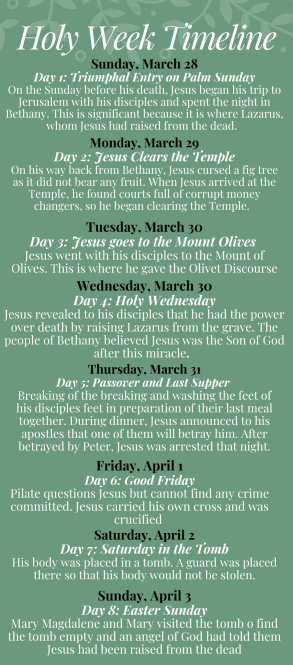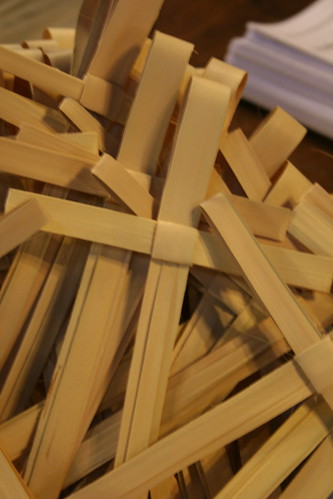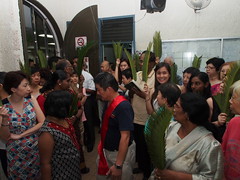
Many people think of Palm Sunday simply as the Sunday before Easter. It is much more than that.
Palm Sunday is a Christian feast that kicks off the beginning of Holy Week. It commemorates Jesus Christ’s triumphal entry into Jerusalem. It is associated in many churches with the blessing and procession of palms.

These special ceremonies were taking place toward the end of the 4th century in Jerusalem and are described in the travelogue Peregrinatio Etheriae (The Pilgrimage of Etheria). In the West, the earliest evidence of the ceremonies is found in the Bobbio Sacramentary (8th century).
During the Middle Ages, the ceremony for the blessing of the palms was an elaborate ceremony. The procession began in one church, went to another church in which the palms were blessed and returned to the church where the procession had started for the singing of the liturgy. The principal feature of the liturgy that followed the procession was the chanting by three deacons of the account of the Passion of Christ. Musical settings for the crowd parts were sometimes sung by the choir. After changes of the Roman Catholic liturgies, the ceremonies were simplified in order to emphasize the suffering and death of Christ.
The liturgy begins with a blessing and procession of palms, but special attention is given to a lengthy reading of the Passion of Jesus, with parts taken by the priest, lectors and congregation. The palms are often taken home by the members of the congregation. Some of them are burned the following year to serve as the ashes for Ash Wednesday.
In the Byzantine liturgy, the Eucharist on Palm Sunday is followed by a procession where the priest carries the icon representing the events being commemorated. In the Anglican churches, some of the traditional ceremonies were revived in the 19th century. The majority of Protestant churches, while celebrating the day without ritual ceremonies, give palms increasing prominence.

Palm Sunday is celebrated all around the world in different ways.
In Bulgaria, Palm Sunday is known as Tsvetnitsa (tsvete, “flower”) or Vrabnitsa (varba, “willow”), or Flower’s Day. People with flower-related names celebrate this day as their name day.
In the 15th through the 17th centuries in England, Palm Sunday was frequently marked by the burning of Jack-‘o’-Lent figures. This was a straw effigy that would be stoned and abused on Ash Wednesday and kept in the parish for burning on Palm Sunday. The symbolism was believed to be a kind of revenge on Judas Iscariot, who had betrayed Christ. The effigy could also have represented the hated figure of Winter, whose destruction prepares the way for Spring.
In Finland, it is popular for children to dress up as Easter witches and go door to door in neighborhoods and trade decorated pussy willow branches for coins and candy. This is an old Karelian custom called virpominen. It is customary for the children to chant, with some variation, “Virvon varvon tuoreeks, terveeks, tulevaks vuodeks, vitsa sulle, palkka mulle!” which translates as “I’m wishing you a fresh, healthy upcoming year, a branch for you, a prize for me!”

In some regions of Germany, long stakes with pussy willow, box and other twigs are taken for the Palm Procession. In some Southern regions, either the priest leads the Palm Procession, riding on a donkey, or a wooden donkey with a figure of Christ is traditionally trundled with the procession of the faithful.
Palm Sunday mass on campus will take place Sunday, March 28th at 5 p.m. in the Bruckmann Memorial Chapel of Saint Joseph.


